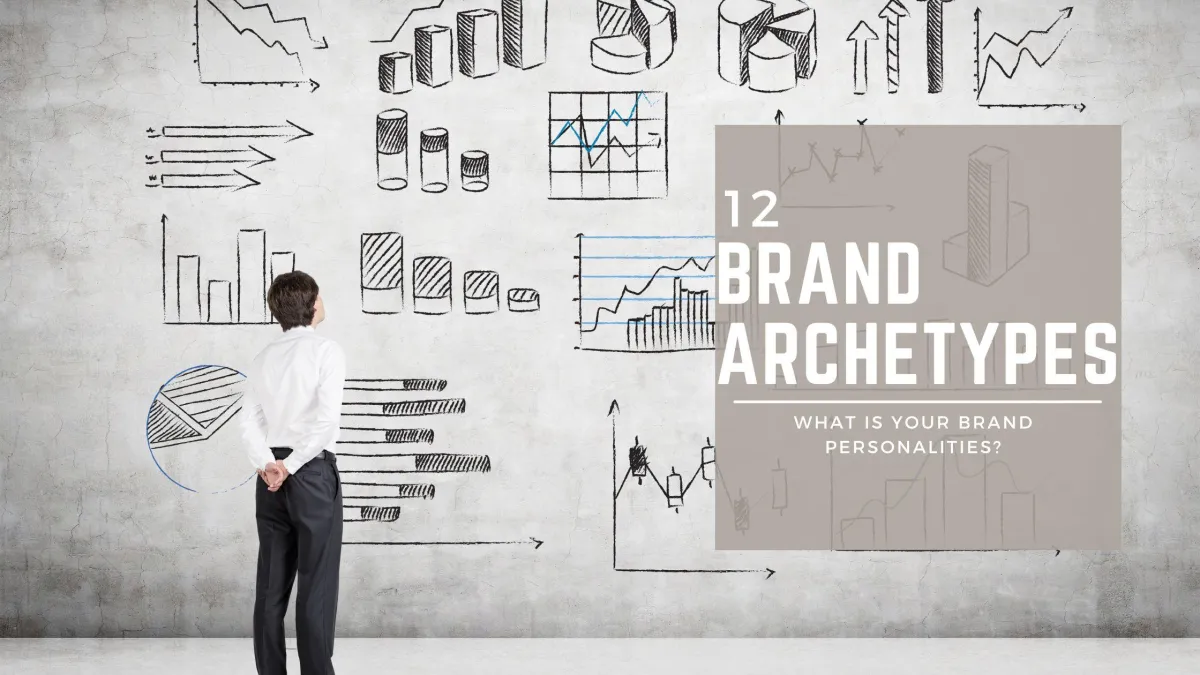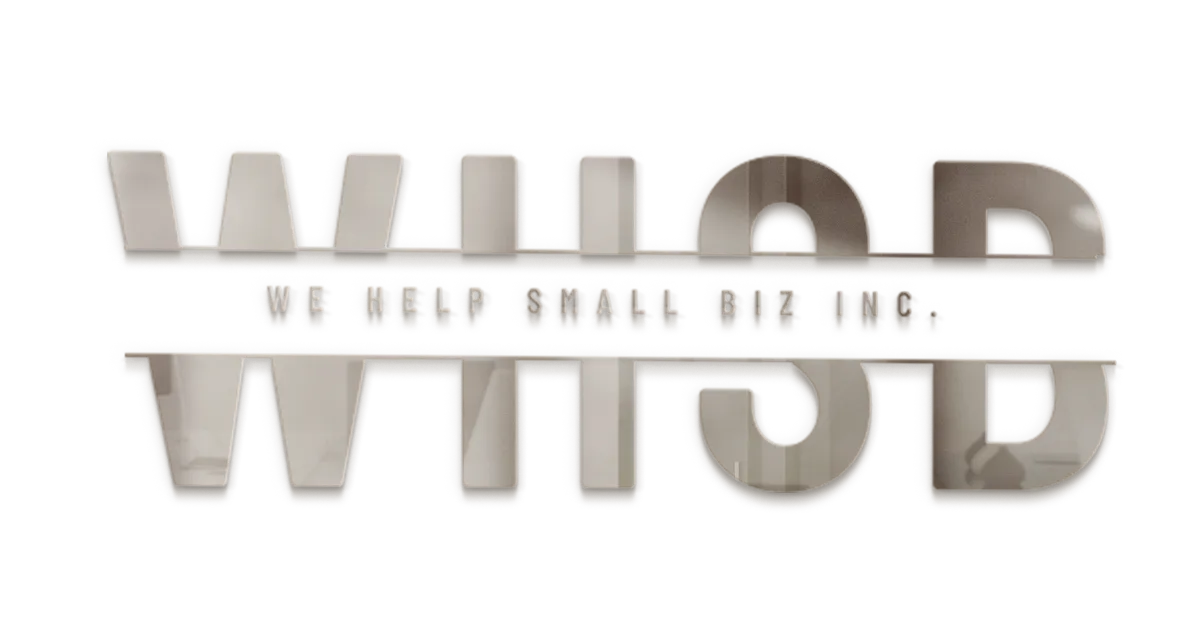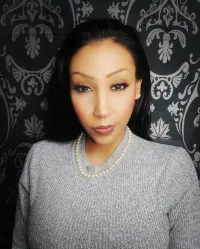We Help Small Biz
Our Blog
For businesses who need a better online presence, We provide the experience and knowledge to get your brand in front of the right customers at the right time to maximized your outreach, because we believe that every business no matter the size should be able to reach their customers in a effective and professional manner.

The 12 Brand Archetypes
A brand archetype is a unique and powerful tool that businesses can use to develop their identity. By understanding the 12 core archetypes, companies can gain insight into how they want to be perceived by potential customers and how to craft a message that resonates with their target audience. This article explores the 12 brand archetypes and provides examples of well-known companies that have adopted them successfully.
Brand Archetype #1: The Creator
The Creator is an ideal brand archetype for companies hoping to emphasize the unique advantages that their services or products offer customers. This innovative, dynamic brand archetype centers on creating exciting, one-of-a-kind experiences for customers. It's all about standing out from the crowd and offering something special that other providers don't. A Creator brand knows they are different, wants to share its creativity with clients, and strives to be unconventional in its approach. Companies electing to follow this archetype rely on their own ideas and expert craftsmanship to lead their offerings instead of competitors’ trends. Regardless of industry, The Creator inspires innovation as a way to stand apart from the competition and build relationships with customers who appreciate tailored experience.
Desire: Create new and better products
Goal: Innovation
Strategy: Use creativity to solve problems
Brand Message: “Think outside the box”
Traits: Innovation, Originality, Expression, Vision, individualistic
Fears: Stagnation, Duplication, Familiarity, Disillusion, Indifference
Brands: Apple, Lego, Adobe, GoPro, Crayola
Brand Archetype #2: The Sage
The Sage archetype is an authoritative figure without being domineering. Known for their immense knowledge and wise answers, the Sage relies on facts and experience with a no-nonsense approach. Sages have a deep understanding of their field of expertise and can be trusted to deliver sage advice. Brands that embody the Sage are reliable, helpful and honest in all their conversations with customers. As a go-to source of trustworthy information, such brands make the customers feel secure in their decision making, while inspiring them to strive to be more knowledgeable in their own way.
Desire: Seeking out knowledge
Goal: Knowledge
Strategy: Facts and Experience
Brand Message: “Knowledge is power”
Traits: Wisdom, Intelligence, Expertise, Information, Influence
Fears: Lies, Misinformation, Ignorance, Inaccuracy,
Brands: TED, Google, BBC, Discovery Channel, The Times
Brand Archetype #3: The Caregiver
The Caregiver brand archetype is the ultimate embodiment of altruism and compassion, focused firmly on taking care of other people with an almost maternal instinct. A brand which follows this archetype will be extremely invested in their customers and strive to help them in whatever way they can, with no strings attached. Caregiver brands are strong communicators with an inclusive tone that welcomes anyone who needs help or support. Through the use of genuine and understanding language, these brands build relationships with customers by providing a caring atmosphere around them. Its messages will focus on reliability and support, making sure their customers feel secure and taken care of at all times.
Desire: Take care of others
Goal: Helping Others
Strategy: whatever way they can
Brand Message: “I can help you”
Traits: Compassion, Caring, Reassuring, Nurturing, Warm
Fears: Helplessness, Selfishness, Ingratitude, Instability, Neglect
Brands: Unicef, Johnson & Johnson, NHS, Pampers, Volvo
Brand Archetype #4: The Innocent
The Innocent brand archetype is a reminder that sometimes, the most simple and pure ideal holds the most power. Companies who employ this archetype want to display an authentic innocence in their products, services or messaging. By taking initiative with guileless enthusiasm and delivering on its promises, they are able to convey a trustworthy persona where quality and reliability are key. Stripping away the complexities of the world and allowing customers to take comfort in the core tenet of The Innocent brand archetype; relieving worries through simplicity and purity.
Desire: Everyone is happy
Goal: Happiness
Strategy: Do the right thing
Brand Message: “The glass is half full”
Traits: Optimistic, Charming, Honest, Loyal, Simplistic
Fears: Depravity, Deceit, Complexity, Punishment, Confusion
Brands: Dove, McDonald’s, Innocent, Coca-Cola, Volkswagen
Brand Archetype #5: The Jester
Incorporating the Jester brand archetype can be a unique and entertaining way to market your business. The Jester is lighthearted, humorous, uses puns and silly jokes, but also has a serious side too - as it often stands up for rights, honest truth, and doesn't tolerate intolerance. Leveraging this archetype’s distinct outlook can add an element of fun to projects while also highlighting important values. As funny as they are reliable, companies using the Jester strategy tell their audience that they have something to laugh about but also something to be taken seriously.
Desire: Live in the moment
Goal: Entertainment
Strategy: Be Fun/ Funny
Brand Message: “Life is to serious”
Traits: Playful, Humorous, Positivity, Togetherness, Funny
Fears: Boredom, Negativity, Seriousness, Gloom, Misery
Brands: Paddy Power, Budweiser, Skittles, Old Spice, M&Ms
Brand Archetype #6: The Magician
The Magician archetype focuses on mystery and hinting at something bigger than what can easily be seen or understood. To embody this persona, brands use imagery and messaging of strength, knowledge, and creativity that compel customers to look into what lies underneath the surface. Through clever communications, the Magician archetype encourages the customer to join in an exploration of the unknown, creating a sense of adventure and ultimately leading them back to the products and services offered by the company.
Desire: Turn dreams into reality
Goal: Magical Moments
Strategy: Create a unique experience
Brand Message: “Make the impossible, possible”
Traits: Transformational, Charisma, Imaginative, Idealistic, Insightful
Fears: Repetition, Boring, Stagnation, Doubt, Ignorance
Brands: Disney, Dyson, TUI, Polaroid, MAC Cosmetics
Brand Archetype #7: The Ruler
The Ruler brand archetype is perfect for organizations who want to create a sense of authority and leadership in their field. By embracing the qualities of being decisive and powerful, the Ruler fosters an atmosphere of trust, reliability, and expertise. This archetypal personality also stands as a symbol of benevolence, often providing security or protection to followers. Organizations that embody the Ruler can use this strength to inspire confidence in their products or services, creating loyal customers with a long-term stake in their success.
Desire: Control
Goal: Success
Strategy: Be the leader
Brand Message: ”We are the best of the best”
Traits: Power, Status, Success, Wealth, Loyalty
Fears: Losing power, being undermined, rule breakers, rebels, xxx
Brands: Microsoft, Rolls Royce, Rolex, Hugo Boss,
Brand Archetype #8: The Hero
The Hero brand archetype focuses on strength, determination and courage. It strives to inspire and empower consumers to reach their fullest potential by embodying the best of human qualities such as heroism, self-sacrifice, and ambition. Businesses who tap into this brand archetype can create a positive emotional connection with consumers who may be looking to make meaningful connections in an increasingly digital world. Moreover, The Hero allows organizations to leverage their message of strength and resilience as a way to stand out from their competitors and make an impact in their space. Companies that focus on being heroes for their audience often create life-long loyalties among customers because it has the power to become more than just selling products – it can foster real relationships built on shared values and mutual benefits.
Desire: Mastery
Goal: Improve the world through courage
Strategy: Motivate and encourage
Brand Message: “Where there’s a will there’s a way”
Traits: Bravery, Courage, Honor, Inspiration, Growth
Fears: Weakness, Incapability, Injustice, Cowardice, Incompetence
Brands: Nike, BMW, FedEx, Adidas, The Royal Marines
Brand Archetype #9: The Regular Guy
The Regular Guy archetype is all about being genuine, authentic, and trustworthy. As opposed to the 'flashy' Brand Archetypes around them, they focus on being reliable and delivering consistent results. Customers looking for a product or service that upholds these values can feel confident that this type of Brand Archetype represents their interests in mind. The Regular Guy Brand Archetypes understand the importance of customer relationships, always striving to make their customers happy and create mutually beneficial contracts. In addition to this, their customers know they are never going to be taken advantage of when dealing with a business aligned with this Brand Archetype. All in all, the Regular Guy represents an important model for businesses looking to establish meaningful relationships with customers based on trust and integrity.
Desire: Connection with others
Goal: Belonging
Strategy: Down-to-earth and trustworthy
Brand Message: “Im just like you”
Traits: Dependable, Realistic, Pragmatic, Inclusive, Equality
Fears: Exclusion, Standing out, Hostility, Isolation, Separation
Brands: Tesco, Lynx, Ford, Levis, Ikea
Brand Archetype #10: The Rebel
The Rebel archetype is a bold and daring symbol, representing those who challenge the status quo. They are stood for independence, representation of individuality and are willing to break the rules for progress. Rebelling against current limits doesn't necessarily mean anarchy and disorder; it also reflects on determination, courage and opposition to mainstream thinking. The rebellious spirit evokes feelings of passion for change, fighting for a cause and creative destruction in order to inspire others to move away from boring ideas or patterns. By being a disruptive force in today's society, the Rebel index represents an impetus for innovation, which often leads to breakthroughs that can benefit the masses with its boldness yet unconventional approach.
Desire: Revolution
Goal: Disruption
Strategy: Shake things up and do things differently
Brand Message: “Rules are made to be broken”
Traits: Disruptive, Liberator, Confrontational, Independent, Change
Fears: Conformity, Rules, Repetition, Rigidity, Status Quo
Brands: Harley-Davidson, Uber, Diesel, Greenpeace, Red Bull
Brand Archetype #11: The Explorer
The Explorer brand archetype embraces curiosity and a desire to discover the unknown. Organizations pursuing this archetype are willing to take risks and aim to break boundaries in order to uncover unique insights that others may have missed. They are driven by the challenge of blazing uncharted trails while pioneering new products, services, or marketing strategies that push both the organization and their industry forward. To embody this archetype, organizations must be driven by innovation and unafraid of change – redefining what is possible through their boldness and ambition.
Desire: Discovery
Goal: Excitement and Fulfillment
Strategy: Take your own path
Brand Message: “Set yourself free”
Traits: Discovery, Adventure, Independence, Exploration, Pioneering
Fears: Aimlessness, Conformity, Safety, Confinement, Short Sightedness
Brands: NASA, Jeep, The North Face, Subaru, National Geographic
Brand Archetype #12: The Lover
The Lover brand archetype often speaks to audiences that value passion and connection on a deeply personal level. Promoting desire, this archetype seeks to tap into a customer's need to connect with their desired goal. Whether through soft messaging or visually stimulating imagery, the Lover encourages an audience to cultivate a relationship between themselves and the product or services being advertised. Products surrounding this archetype draw upon romance, devotion - even at times an appreciation for decadence - in order to attract customers more readily. From skincare lines looking to describe products with intimate language to jewelry advertisements featuring aspirational couples, the Lover is a powerful force when it comes to capturing consumer attention.
Desire: Connection
Goal: Intimacy
Strategy: Be desirable
Brand Message: “Sex sells”
Traits: Passionate, Committed, Romantic, Affectionate, Indulgent
Fears: Rejection, Isolation, Loneliness, Unloved, Invisible
Brands: Victoria’s Secret, Godiva, Anne Summers, Alfa Romeo, Chanel
How to determine your brand archetype?
Determining your brand archetype is an important tool for marketing yourself or your business. It allows you to find the essence of who you are and then project that personality in all your communications. To figure out your brand archetype, start by looking at the different types and consider which one you feel is most closely aligned with how you want to be seen and experienced. Think about values, goals, virtues, and traits that most resonate with you -- these can guide you as you decide on a particular archetype. Consider how all of this relates back to how customers perceive your product or service and what message that sends to them. Make sure when honing in on a specific archetype it is consistent throughout your communications so customers will know who they are dealing with.
Each one of these 12 archetypes has something different to offer businesses seeking to create an effective brand strategy. Whether you decide to adopt one or more archetypes as part of your branding efforts is up to you—but it's important that you understand what each one stands for so you can craft the best message possible for your target audience! By understanding which brands resonate most strongly with your intended customer base—and utilizing those insights effectively—you'll be able to create a unique identity that sets you apart from your competition!

